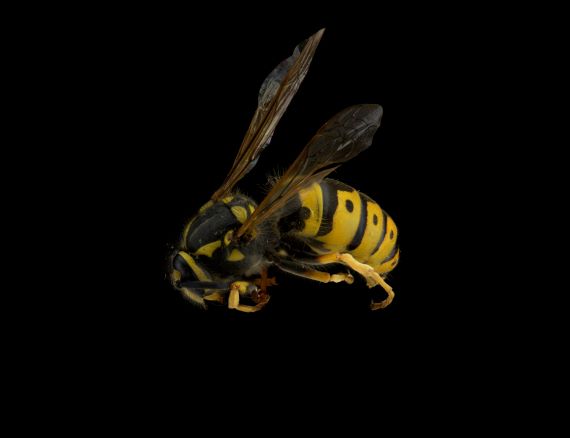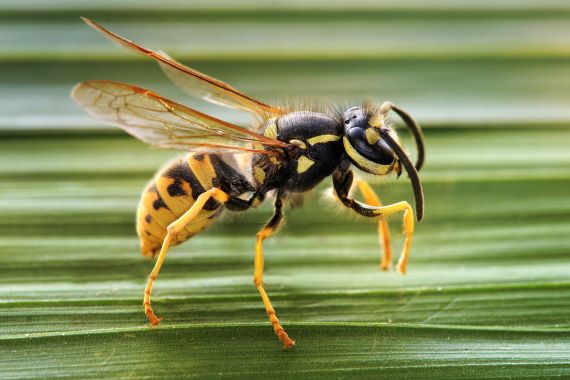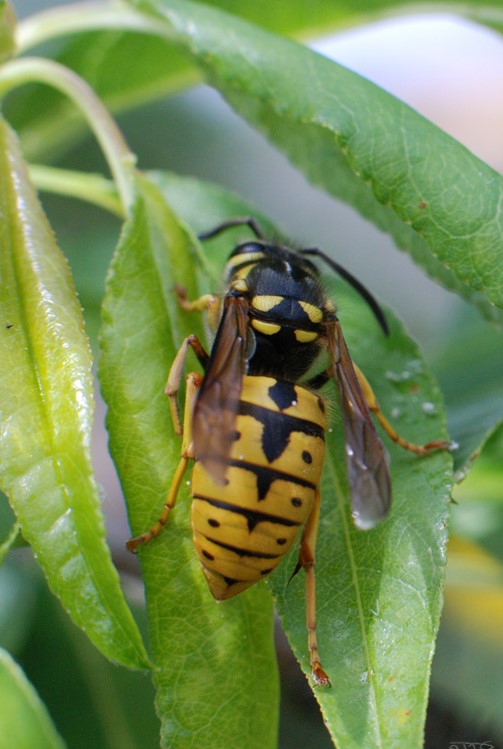
European wasp



Vespula germanica
Should I report?
The European wasp was first found in Australia in 1959 after being introduced from overseas. This non-native species has become established in Tasmania, South Australia, Victoria, and New South Wales.
You do not need to report the European wasp as it is now established. If you have a European wasp nest at your home you can contact a pest controller, or if they are a nuisance pest in a public space you can contact your local council.
Description
European wasps have a bright yellow and black body with yellow legs and triangular markings on the abdomen with small black dots either side. They are a social species and build nests out of chewed up fibrous wood that are generally located in cavities and hollow trees.
More information on European wasps (PDF, 193.93 KB)
Distribution
The European wasp is native to Europe, North Africa and Asia. It has now spread throughout the world.
Damage
The economic impact from these wasps on primary industries within beekeeping, forestry and horticulture is significant. They have the potential to disrupt native ecosystems by taking food sources away from native species and disturbing the natural food chain. European wasps are known to be territorial therefore place a negative impact on human health.

